Potrebujeme váš súhlas na využitie jednotlivých dát, aby sa vám okrem iného mohli ukazovať informácie týkajúce sa vašich záujmov. Súhlas udelíte kliknutím na tlačidlo „OK“.
ASTM G181-11
Standard Test Method for Conducting Friction Tests of Piston Ring and Cylinder Liner Materials Under Lubricated Conditions
Automaticky preložený názov:
Štandardná skúšobná metóda pre dirigovanie Trecie Testy piestnych krúžkov a vložiek valcov materiálov za mazaných podmienky
NORMA vydaná dňa 1.5.2011
Informácie o norme:
Označenie normy: ASTM G181-11
Poznámka: NEPLATNÁ
Dátum vydania normy: 1.5.2011
Kód tovaru: NS-57551
Počet strán: 10
Približná hmotnosť: 30 g (0.07 libier)
Krajina: Americká technická norma
Kategória: Technické normy ASTM
Kategórie - podobné normy:
Anotácia textu normy ASTM G181-11 :
Keywords:
cylinder liner, diesel oil, friction, liquid lubricant, piston ring, Cylinder liner materials, Friction tests, Lubricated materials/testing, Piston rings, ICS Number Code 27.020 (Internal combustion engines)
Doplňujúce informácie
| Significance and Use | ||||||||
|
The efficiency and fuel economy of spark ignition and diesel engines is affected in part to the friction between moving parts. Although no reliable, in situ friction measurements exist for fired internal combustion engines, it has been estimated that at least half of the friction losses in such engines are due to those at the ring and liner interface. This test method involves the use of a reciprocating sliding arrangement to simulate the type of oscillating contact that occurs between a piston ring and its mating cylinder bore surface near the top-dead-center position in the cylinder where most severe surface contact conditions occur. There are many types of engines and engine operating environments; therefore, to allow the user the flexibility to tailor this test to conditions representative of various engines, this standard test method allows flexibility in selecting test loads, speeds, lubricants, and durations of testing. Variables that can be adjusted in this procedure include: normal force, speed of oscillation, stroke length, duration of testing, temperature of testing, method of specimen surface preparation, and the materials and lubricants to be evaluated. Guidance is provided here on the set-up of the test, the manner of specimen fixturing and alignment, the selection of a lubricant to simulate conditioned oil characteristics (for a diesel engine), and the means to run-in the ring specimens to minimize variability in test results. Engine oil spends the majority of its operating lifetime in a state that is representative of use-conditioned oil. That is, fresh oil is changed by exposure to the heat, chemical environment, and confinement in lubricated contact. It ages, changing viscosity, atomic weight, solids content, acidity, and chemistry. Conducting piston ring and cylinder liner material evaluations in fresh, non-conditioned oil is therefore unrealistic for material screening. But additive-depleted, used oil can result in high wear and corrosive attack of engine parts. The current test is intended for use with lubricants that simulate tribological behavior after in-service oil conditioning, but preceding the point of severe engine damage. |
||||||||
| 1. Scope | ||||||||
|
1.1 This test method covers procedures for conducting laboratory bench-scale friction tests of materials, coatings, and surface treatments intended for use in piston rings and cylinder liners in diesel or spark-ignition engines. The goal of this procedure is to provide a means for preliminary, cost-effective screening or evaluation of candidate ring and liner materials. A reciprocating sliding arrangement is used to simulate the contact that occurs between a piston ring and its mating liner near the top-dead-center position in the cylinder where liquid lubrication is least effective, and most wear is known to occur. Special attention is paid to specimen alignment, running-in, and lubricant condition. 1.2 This test method does not purport to simulate all aspects of a fired engine’s operating environment, but is intended to serve as a means for preliminary screening for assessing the frictional characteristics of candidate piston ring and liner material combinations in the presence of fluids that behave as use-conditioned engine oils. Therefore, it is beyond the scope of this test method to describe how one might establish correlations between the described test results and the frictional characteristics of rings and cylinder bore materials for specific engine designs or operating conditions. 1.3 The values stated in SI units are to be regarded as standard. No other units of measurement are included in this standard. 1.4 This standard does not purport to address all of the safety concerns, if any, associated with its use. It is the responsibility of the user of this standard to establish appropriate safety and health practices and determine the applicability of regulatory limitations prior to use. |
||||||||
| 2. Referenced Documents | ||||||||
|
Podobné normy:
Historická
1.4.2011
Historická
1.10.2010
Historická
1.10.2010
Historická
1.9.2013
Historická
1.5.2013
Odporúčame:
Aktualizácia technických noriem
Chcete mať istotu, že používate len platné technické normy?
Ponúkame Vám riešenie, ktoré Vám zaistí mesačný prehľad o aktuálnosti noriem, ktoré používate.
Chcete vedieť viac informácií ? Pozrite sa na túto stránku.


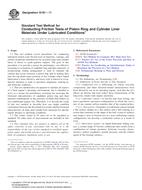
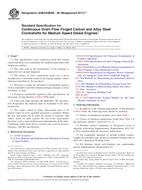 ASTM A983/A983M-06(2..
ASTM A983/A983M-06(2..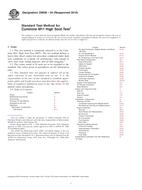 ASTM D6838-04(2010)..
ASTM D6838-04(2010)..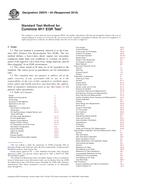 ASTM D6975-04(2010)..
ASTM D6975-04(2010)..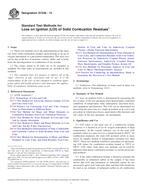 ASTM D7348-13
ASTM D7348-13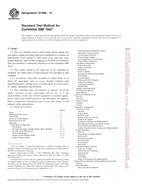 ASTM D7468-13
ASTM D7468-13
 Cookies
Cookies
